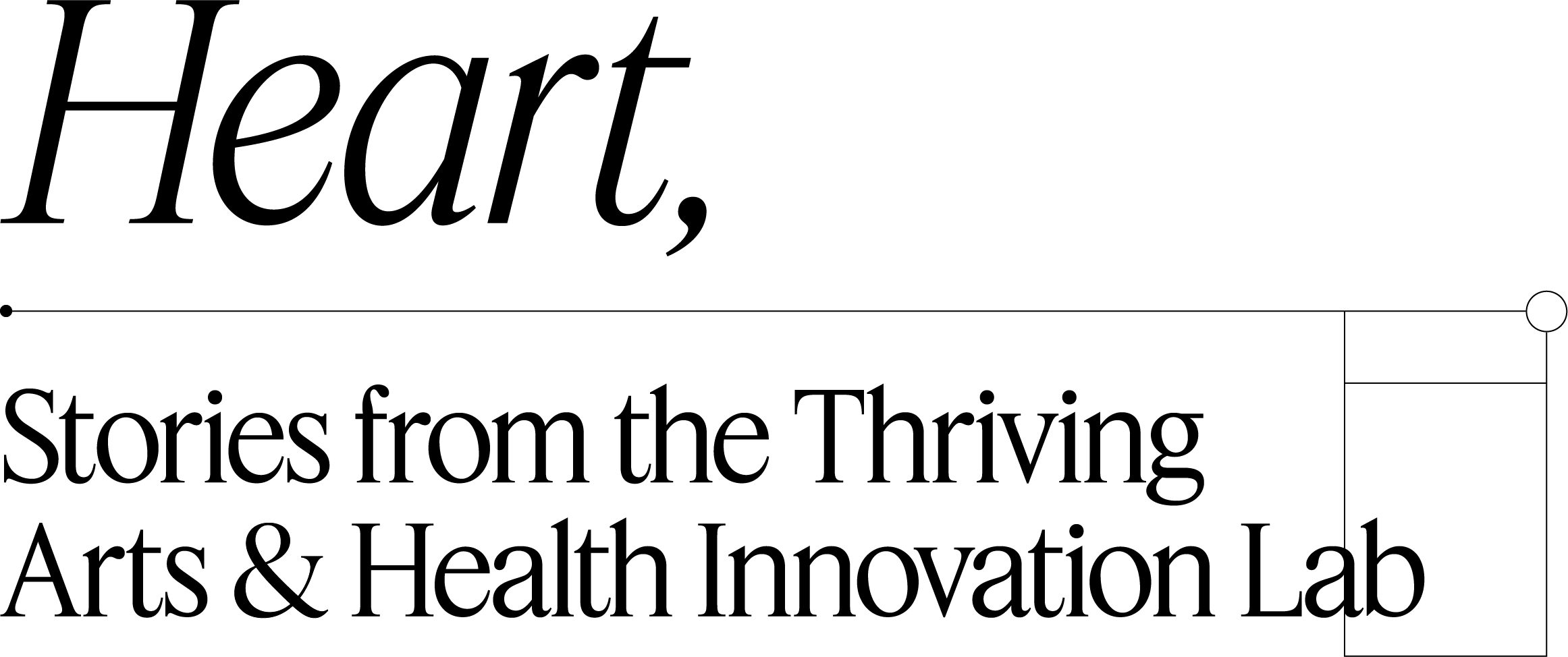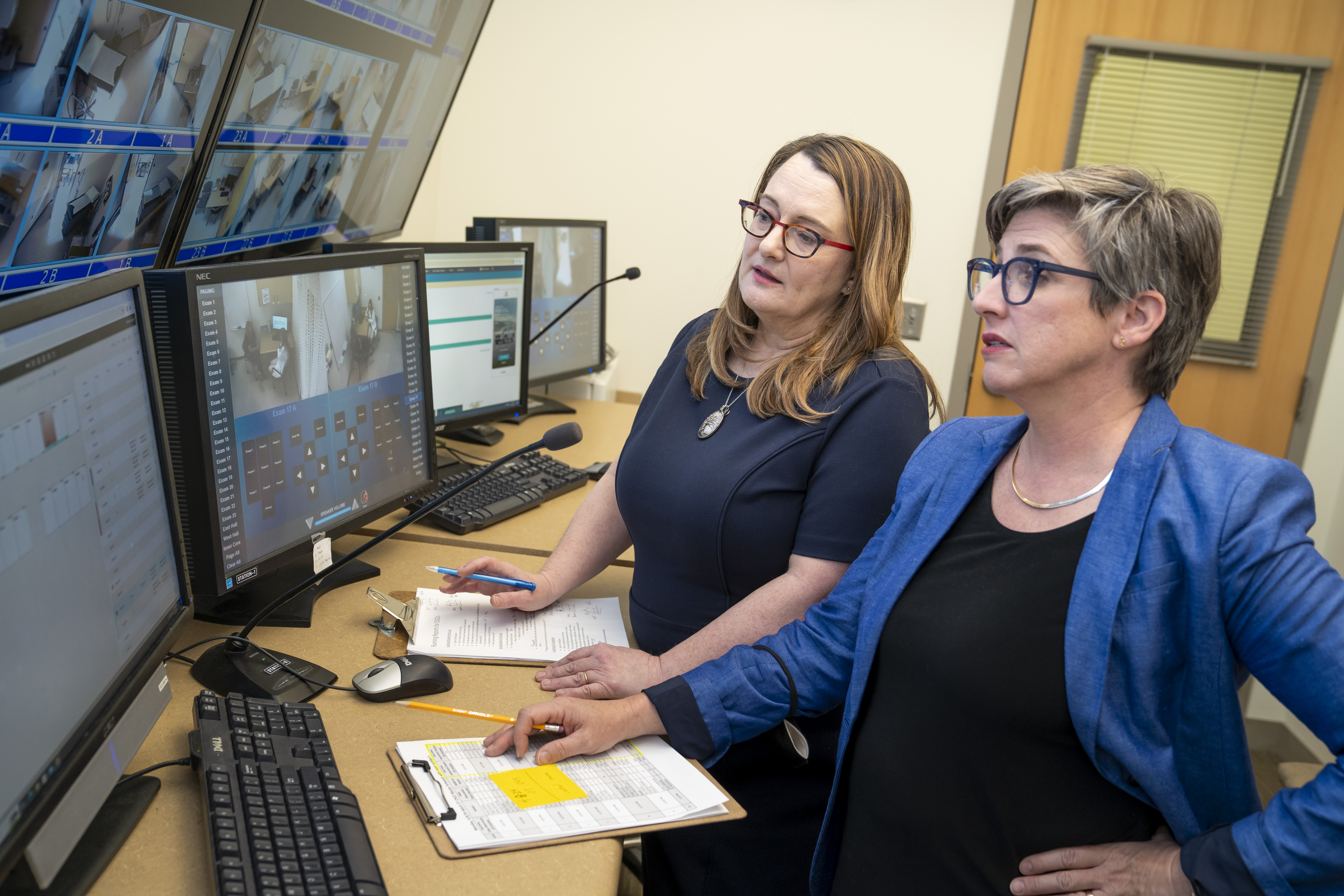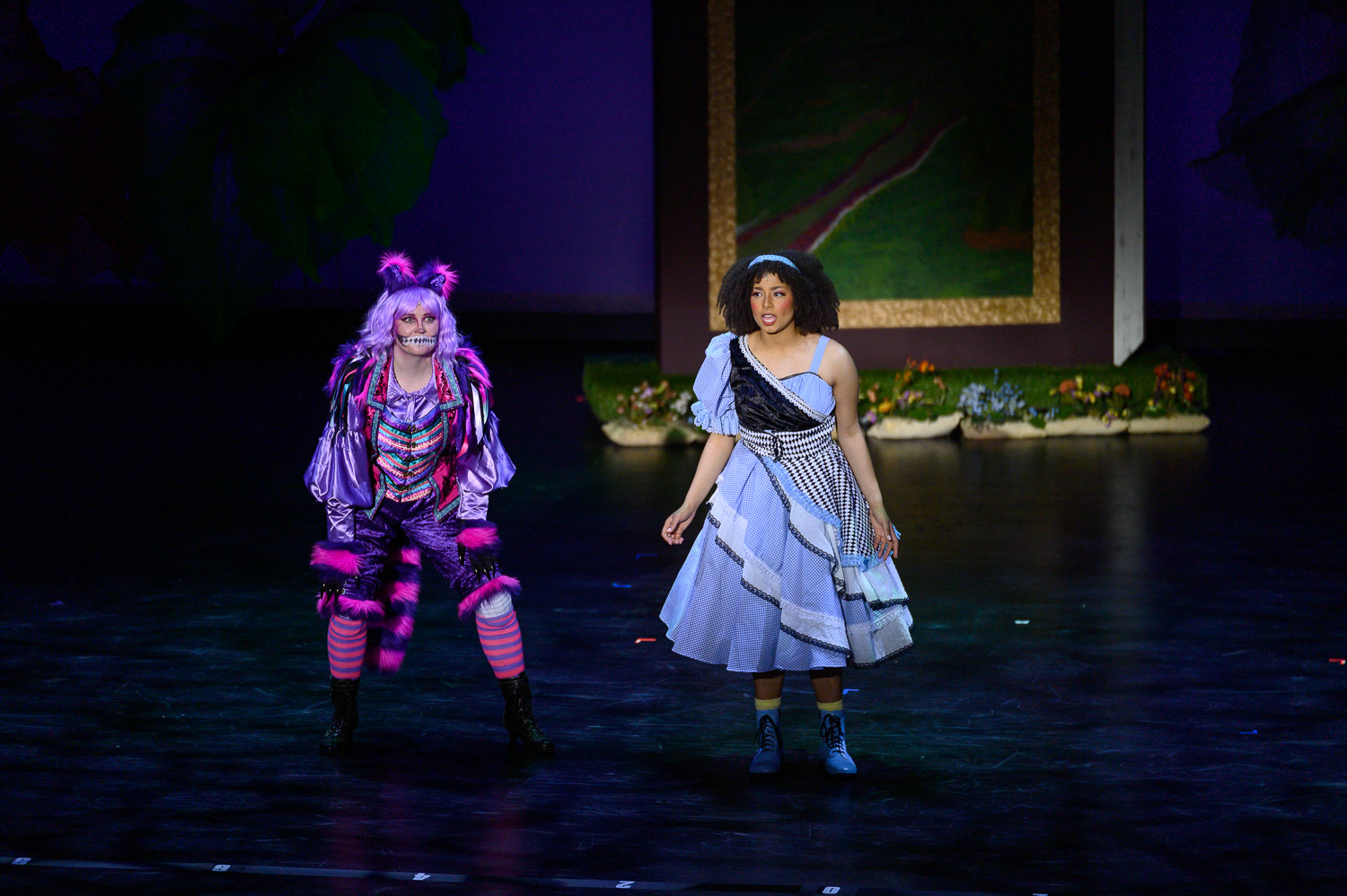WRITTEN BY MARINA GOMBERG
Like the two strands of DNA’s double helix, the relationship between the arts and medicine is a long and winding bond. In Western medicine during the last century, this intersection of two rich disciplines has gone from a dusty, single-lane road to a concrete spaghetti bowl of layered and multidirectional paths with endless possibility for destinations.
There are fertile grounds, like the University of Utah, where quantifying and qualifying the value of the arts in health is a practice in full bloom. And the findings are breathing new life into the creative research around wellbeing.
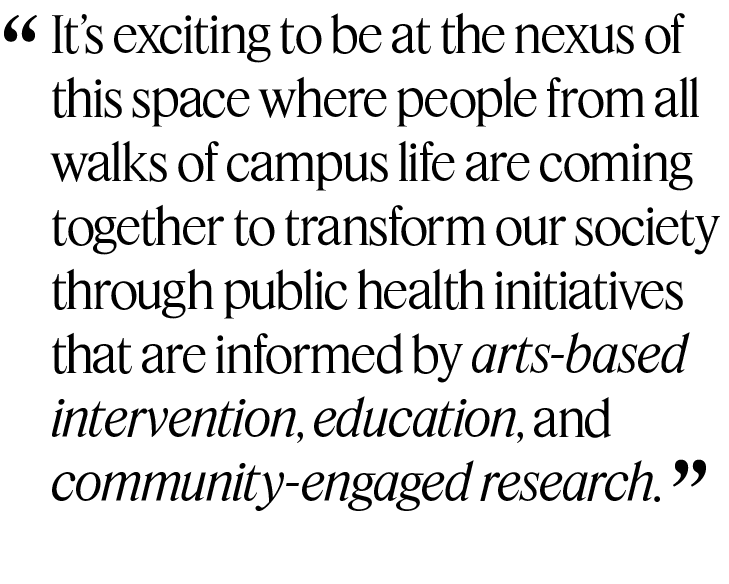
In 2015, the College of Fine Arts launched a formal initiative under the direction of then Associate Dean for Research, Sydney Cheek-O’Donnell, giving credence, a name, and resources to the research being conducted at the intersections of arts and health at the U. In 2018, the Arts & Health Innovation Lab was formalized, now led by Associate Dean for Research Rebecca Zarate, LCAT, MT-BC, AVPT, a research maven and creative arts therapies scholar.
“It’s exciting to be at the nexus of this space where people from all walks of campus life are coming together to transform our society through public health initiatives that are informed by arts-based intervention, education, and community-engaged research,” Zarate said, whose lifework is investigating the socioemotional and the psychophysiological manifestations of health and wellbeing through music and improvised, artistic processes.
She describes how the generation of new knowledge will inform and expand our teaching practices, pedagogy, and training.
And as it turns out, in addition to the need from patients for a wider array of therapeutic modalities and treatments, there is a hunger from faculty and students who are interested in being able to provide them. The demand for certification and licensure is growing.
So, among her priority initiatives, Zarate is hard at work creating the foundational structure for a curriculum in arts and health with specialized tracks in creative/arts therapies. A suite of introductory courses to be offered in Spring 2025 will be the first of their kind in the history of the university and the state.
The roll out of curriculum will expand with the development of professionally geared certificate and graduate level courses, accompanied by continuing education training programs with career tracks in creative arts therapies and counseling, arts and public health administration & leadership, and interdisciplinary arts and health research.
Meanwhile, the innovation, ingenuity, and artistry on the research side are already providing notable societal impact.
Learn more about Arts & Health Innovation Lab in this video.

Lynn Maxfield stays busy with research and teaching, so he only takes on a handful of voice clients. A former professional singer, Maxfield is now the Director of the Utah Center for Vocology and Associate Professor (Lecturer) in vocology at the University of Utah School of Music. That leaves just enough time to take on a few clients as a voice coach in partnership with the U Hospital’s Voice Disorders Center.
Anne Jensen (pseudonym used for privacy) is one of those cases.
In her initial contact with Maxfield, Jensen wrote, “I realize I can never sing in public again or even in church or community choirs, but I would like not to be embarrassed singing with my family, including with my grandchildren who miss me not singing with them. Some days are definitely better than others, and at present, I seem to have no control over good and bad days.”
Maxfield was in.
That yet-to-be-fully-understood connection between participating in the arts and one’s general wellness is an area of particular interest to Maxfield, and Jensen’s unique health circumstances coupled with her heroic determination made for incredibly compelling engagement.
Maxfield detailed their rewarding and successful effort together in, “Singing After Superior Laryngeal Nerve Weakness: A Story of Hope” while concurrently conducting research to measure the impacts of arts participation on health and wellbeing.
He and collaborators, Brian Manternach (Clinical Associate Professor, Theatre), Ben Christensen (Research Assistant Professor, Surgery), and Rebecca Zarate (Associate Dean for Research and Arts in Health Innovation Lab Director) were funded with a Research Incentive Seed Grant from the College of Fine Arts and the Vice President for Research’s Office at the U to investigate changes in health and wellbeing biomarkers as a result of participating in various art forms.
Through saliva samples, heart rate monitoring, and surveys taken before and after engaging in varied art forms (singing, strings playing, wind instruments playing, and straight play acting), the research team looks to identify how these performing arts activities affect both biological and psychological health and wellbeing including inflammatory responses, stress, and anxiety. They’ll also be able to isolate how specific factors like music and controlled breathing might, to borrow a phrase, play roles in wellbeing. Data collection should be completed this year, and they are looking to publish the results in 2025.
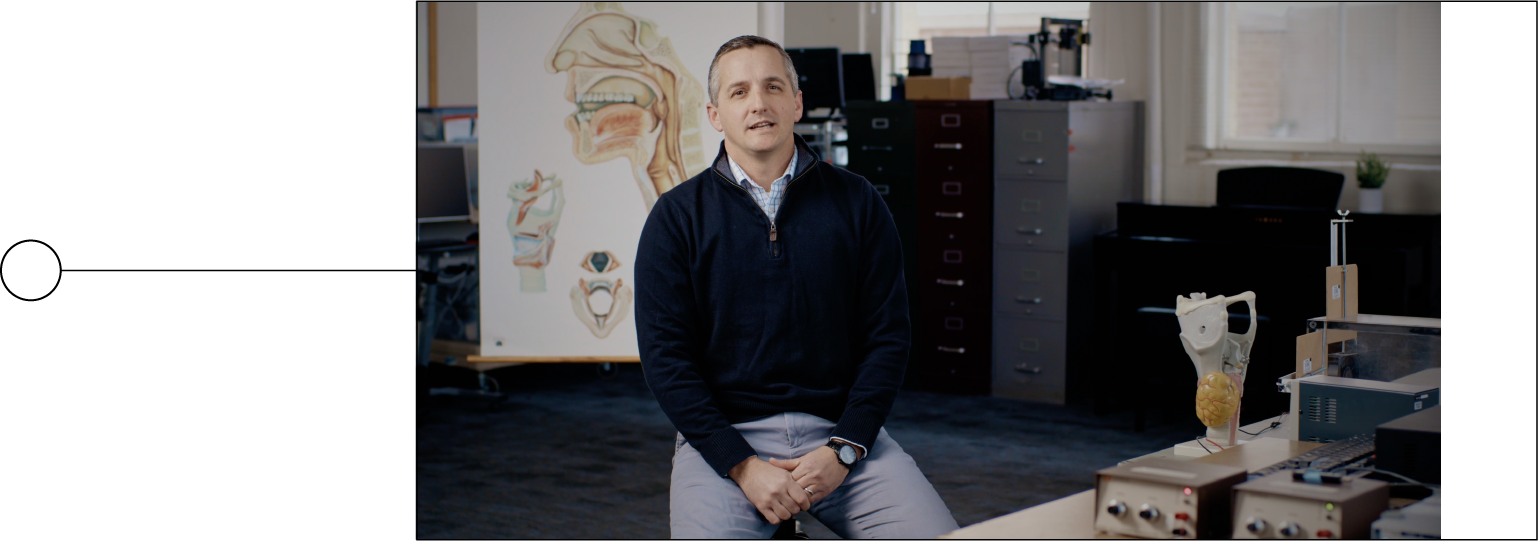
Still image of Lynn Maxfield from Arts & Health film by TWIG Media Lab
Like the World Health Organization notes about health being more than just the absence of disease or infirmity, Maxfield says, “On one hand, we hope this information helps us as a society be better able to prescribe arts interventions as therapy. But we also want to be careful not to just see this work through the lens of curing illness. In addition to being an effective treatment, the arts can be instrumental in the purposeful act of promoting wellness.”
People like Maxfield, who are changing lives on both the macro and micro scale, are rare, but he’s hoping to change that. The cohort at the Utah Center for Vocology dedicate as much of their resources toward education as they do research.
With its Summer Vocology Institute, a roughly two-month intensive geared toward providing any person who habilitates vocal behavior — from speech-language pathologists or otolaryngologists to singing teachers and voice coaches — with the information they need to expand their knowledge base and take their practice to new, informed heights, the Utah Center for Vocology is leading the way in these interdisciplinary and largely uncharted waters.
So, if you can hear the songs of enlightenment in the air, rest assured they are being tended to by a growing number of creative thinkers and researchers dedicated to the art of voice.
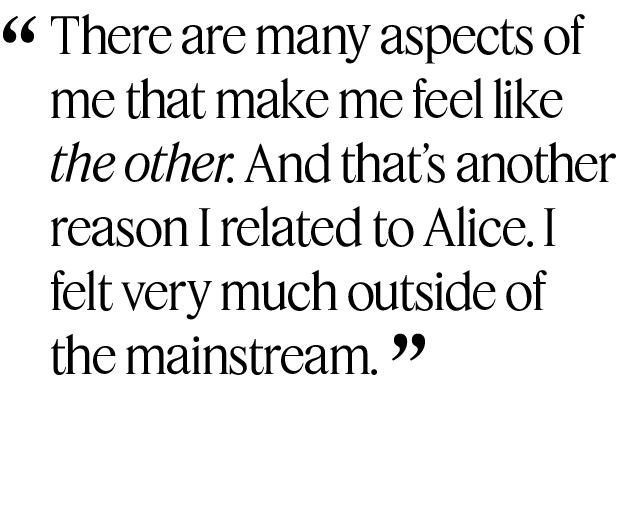
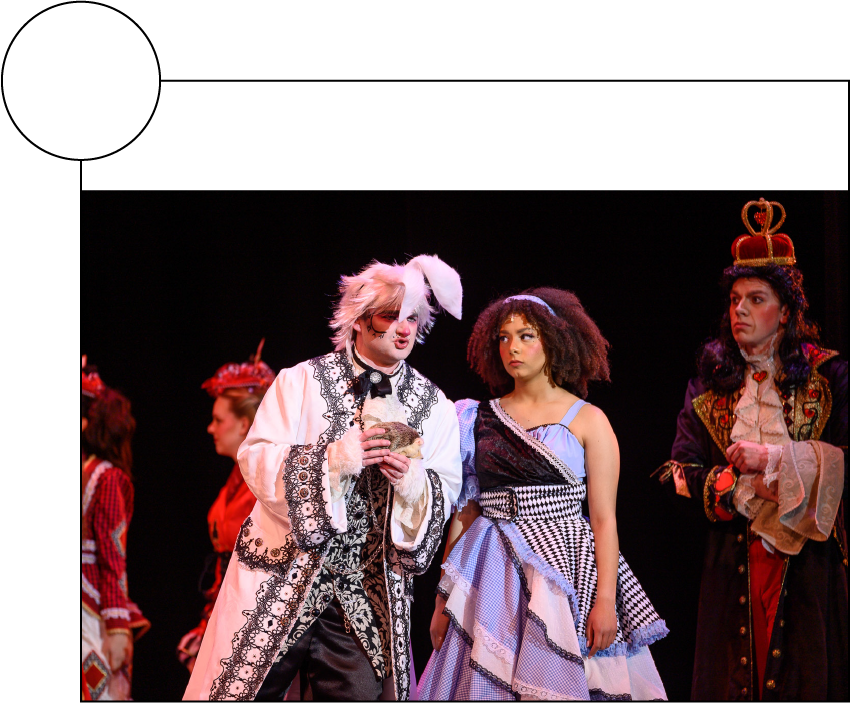
Alexander Harrelson (left) as the White Rabbit, Isabel Cossa (center) as Alice, and R. Porter Hiatt (right) as the King in Amy Scurria’s opera “A.L.I.C.E.” (Photo: Brandon Cruz Photography)

When composer Amy Scurria described how she takes in sound, she waved her hands like flowing seagrass in front of her ears and said, “I experience sound like this.” And then her hands seemed to follow a rolling line from her head to her chest as she said, “And I experience sound like this. And like this,” her open right palm met her heart, and then her fingers danced like raindrops on her forearm.
The idea of hearing is more than just what’s traveling through Scurria’s eardrums, and perhaps that’s why she fell in love with music at three and was composing by eight. She went on to earn her PhD in music composition from Duke University.
Though she didn’t know it until serendipitously being diagnosed during the time she was composing her most recent opera, Scurria is autistic. She is also a feminist. And a proudly queer and genderfluid person.
“There are many aspects of me that make me feel like the other,” she said. “And that’s another reason I related to Alice. I felt very much outside of the mainstream.”
She was referencing the adventurous, likeable, imaginative, curious, and entertaining lead in “A.L.I.C.E.,” her adaptation of Lewis Carroll’s “Alice’s Adventures in Wonderland.”
Scurria’s reimagined opera had its world premiere during UtahPresents’ spring season and was a collaboration with the University of Utah School of Music’s U Opera and Utah Philharmonia. Students got the unique opportunity to perform the original version of a debuting professional work and interact with the talented artists who created it, thanks to a Dee Grant won by voice professor and U Opera director, Robert Breault.
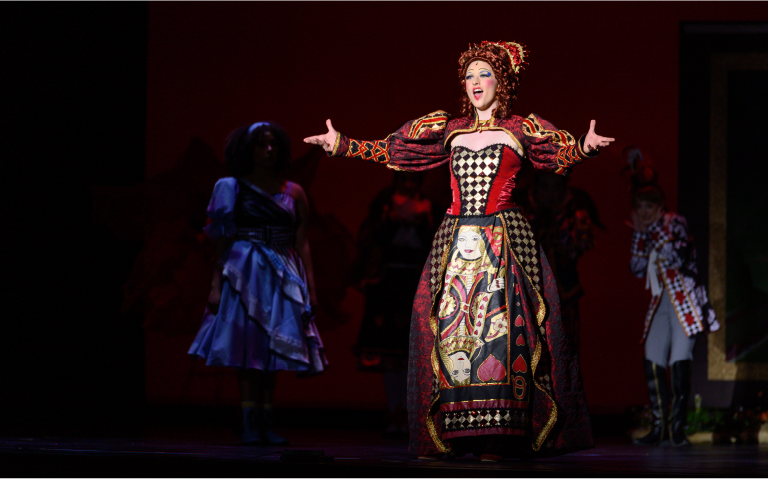
Karley Swallow as the Queen of Hearts (Photo: Brandon Cruz Photography)
The show’s run offered a sensory-friendly performance, which took into consideration everything from sound and lighting to ticketing and seating to thoughtfully welcome those with sensory sensitivities.
UtahPresents has a history of this kind of programming, including the annual production by Youth Theatre at the U. Executive Director Chloe Jones says it’s a “meaningful way for us to broaden access to the arts and build inclusivity at Kingsbury Hall.”
The offering was special to Scurria, who deeply enjoys arts experiences, but can become uncomfortably overwhelmed by the stimulation.
Her life partner, gifted short story writer, and now librettist, Zane Corriher, noted just how impactful Scurria’s autism diagnosis was to the process of shaping Alice’s story and to better understanding Scurria’s. The parallel exploration of identity fueled the art and fueled their understanding.
While developing the opera’s central theme (which Scurria was determined to make different from most female narratives in opera that end in some form of tragedy), Corriher noted how the characters Alice meets are so nonsensical and silly. Scurria disagreed.
“This is their world, and it seems silly to Alice and Alice seems silly to them and they just miss each other — they don't understand each other,” she said.
“And that became the lens through which I wrote the story,” Corriher reflected. “Which is an autistic experience lens. You have these two worlds existing simultaneously that just miss each other. The autism diagnosis made sense of the way Amy made sense of Alice.”
That ability to name an experience and the ensuing and profound effect that can have on one’s self-worth, was a gift to the duo — one they decided to pay forward through their work.
So, instead of answering with her prepared list of attributes, as she had so many times when asked who she was, Alice’s final line in the opera is: “My name is Alice, and I am enough.”
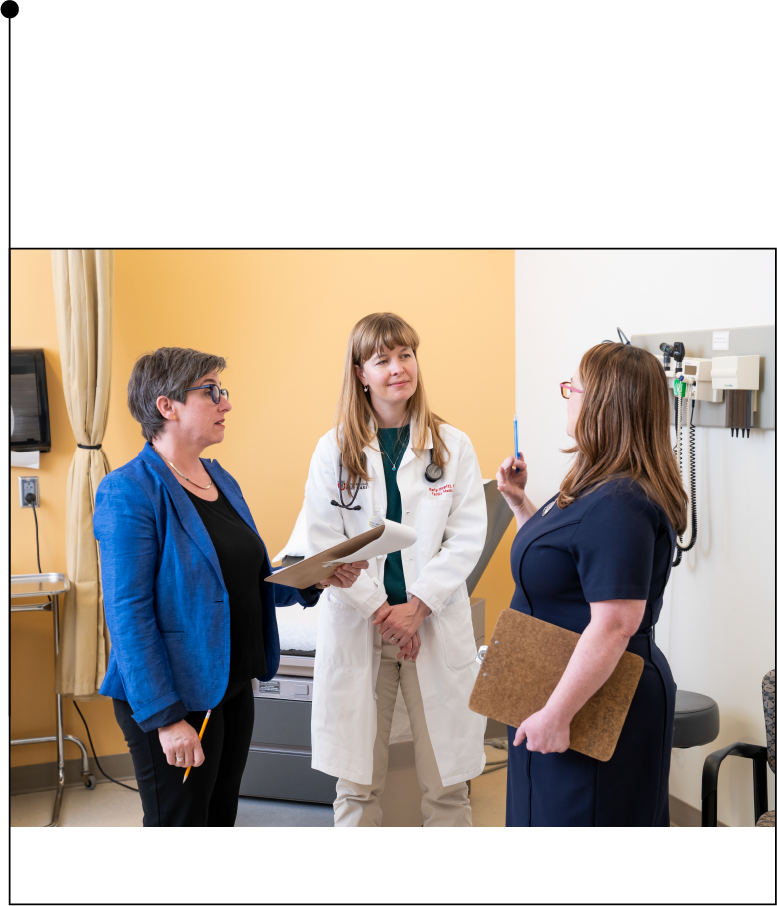
Sydney Cheek-O’Donnell (left) and Gretchen Case (right) speak with collaborator Dr. Karly Pippitt (center) about CRiTICS and its simulated interventions

Gretchen Case and Sydney Cheek-O’Donnell have, like many of us, experienced medical care that while technically proficient was upsetting because of complicated interpersonal interactions with their providers. They are also theatre professionals trained in the nuanced art of expressing and managing emotions.
The two are Associate Professors in the Department of Theatre, and Case is also an Adjunct Associate Professor in Internal Medicine and the Director of the Center for Health Ethics, Arts, and Humanities at the U.
It’s easy to imagine them talking over a meal about their health experiences, wondering whether teaching medical students theatre techniques, like connecting to a character or scene and using one’s own humanity to shape a moment’s emotional arc, might positively affect how the students provide future care.
*Lightbulb*
As researchers with experience in interdisciplinary collaborations and a network of engaged colleagues across the arts and in medicine at a Research 1 institution, their inspired question had the potential to move from the hypothetical to the laboratory. And that’s precisely what happened.
With some pivotal early funding from the Utah Center of Excellence in ELSI (Ethical and Legal Scientific Implications) Research (UCEER) and over $100,000 dollars in grant money — half from the National Endowment for the Arts and the other half matched by the U — Case and Cheek-O’Donnell devised a way to investigate their question.
The dynamic, curious, capable duo had visions of arts-informed healthcare and the chops to manifest it . They dreamt up an approach called CRiTICS or Coached Rehearsal Techniques for Interpersonal Communication Skills, which introduces theatre-based techniques like blocking, breathing, and emotional connection to health care providers to finesse how they bring their own personhood to difficult conversations.
“A small part of it is saying the words,” said Cheek-O’Donnell about delivering challenging news to a patient. “And the rest of it is all the things around the saying of the words. The whole human body is an instrument of communication, and actors and directors are trained in the nonverbal and paraverbal communication — components paramount to a medical provider in being fully present in a moment with their patient.”
To assess the effectiveness of CRiTICS in improving interpersonal communications among medical students, they set up a randomized controlled trial with two groups, both preparing to disclose difficult news to a trained actor playing the family member of a patient.
Students in the “control” group participated in a 50-minute small-group discussion with peers led by a medical school faculty member. Together, they reviewed the scenario, best practices for communicating difficult news, and planned what they would do and say during the simulated conversation that would take place two days later.
Students in the “intervention” group were broken up into pairs and participated in a 50-minute individualized session led by an experienced acting teacher or director. During the session they practiced delivering difficult news to an actor and then received expert, specific, and nuanced feedback with the opportunity to implement it in rehearsal right then and there.
All 123 medical students from both groups went to a simulation center on campus and were recorded disclosing the news to an actor in a room designed to look like a patient room in a medical clinic.
Assessments of these recordings by research assistants, who were blind to which group the participant belonged, showed statistically significant differences between the control and intervention groups in certain areas of nonverbal and paraverbal communication. Further, the group that prepared using rehearsal techniques showed significant increases in confidence in both their socioemotional communication and content delivery.
Case and Cheek-O’Donnell are currently working to publish these and more findings in the coming months.
“What we’ve learned from CRiTICS so far is really exciting,” Case said. “The ultimate goal would be that theatre-based interventions are accepted as helpful to clinical communication skills training and theatre practitioners might be ‘called for a consult,’ to speak in the language of the medical world. It’s standard practice in medicine to call on the expertise of specialists as needed to deliver quality medical care. Sometimes that expert consultant needed is an artist.”
Curtain close.
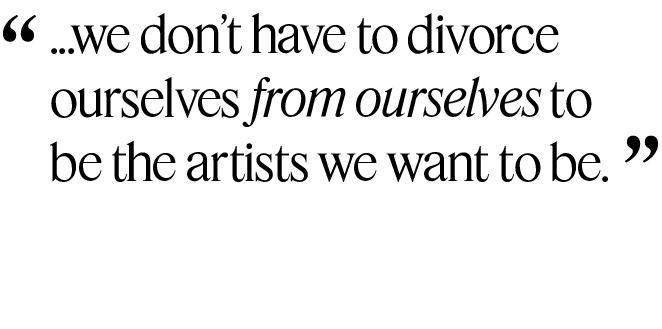
Still image of Luc Vanier from Arts & Health film by TWIG Media Lab
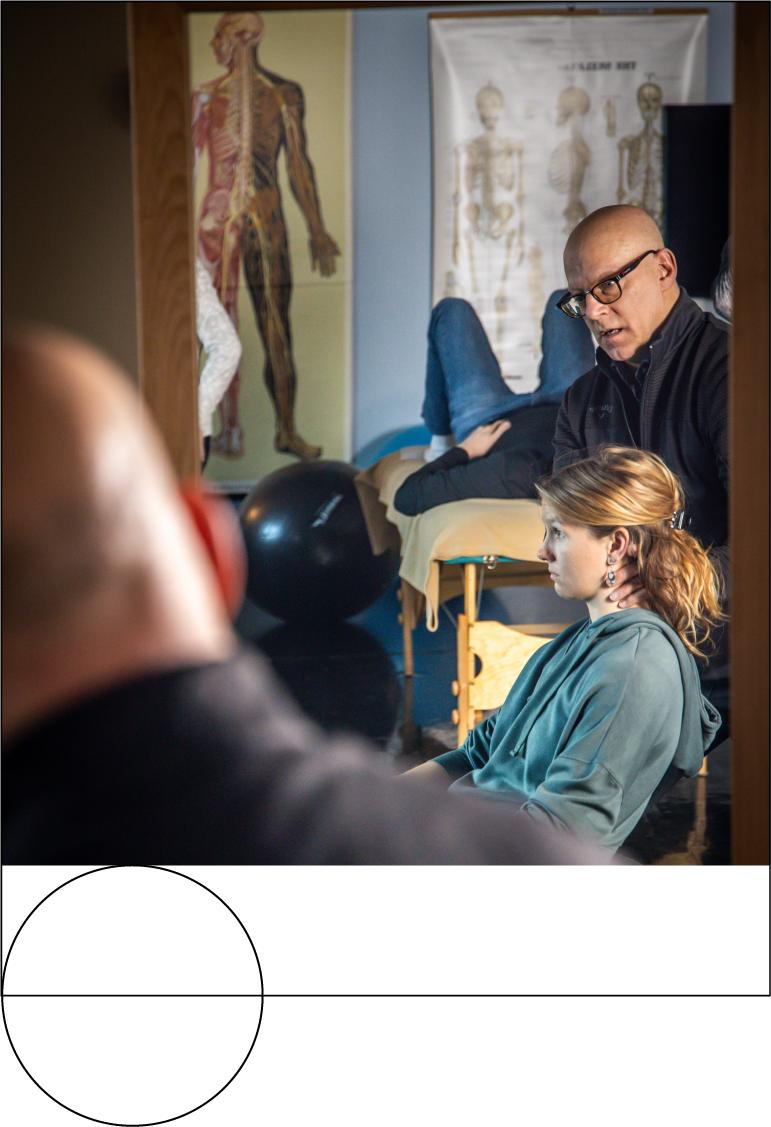

There’s an interesting parallel between the process that led University of Utah School of Dance Professor Luc Vanier to learn about the Alexander Technique (AT) and the actual technique itself. It’s a pattern of mindfulness becoming awareness that begets positive change.
After experiencing an extreme back injury as a professional ballet dancer, Vanier sought all manners of rehabilitation — anything to get him back at his craft. After months of varied but unsuccessful efforts, his physical therapist at the Cleveland Clinic recommended he listen to a talk being given there by Helen Hobbs, the only Cleveland Alexander Technique teacher at the time.
“As a dancer, I thought I knew most everything about movement and my body,” Vanier recalls. “So, to be so shocked by this new information — that I wasn’t even sure I fully understood — made me very curious.”
Essentially, the Alexander Technique is an approach to mind and body habits that help manifest one’s agency to move mindfully and with greater ease.
As a holistic practice, it can be employed in endless ways including to address pain from repetitive injury, discomfort from postural issues, and to enhance performance for singers, musicians, actors, dancers, or athletes.
The technique’s success in getting Vanier back to efficient, comfortable movement made it even more intriguing, fueling his thirst for more information.
Fast forward two decades later and Vanier now assists others in the 1,600-hour, 3-year training to become certified Alexander Technique teachers. He also instructs teachers across the globe and has written books, chapters, and articles on the topic. His particular focus has been to build the Framework for Integration (with collaborators Rebecca Nettl-Fiol from University of Illinois and his wife Elizabeth Johnson at University of Florida), a particular development of his branch of the Alexander Techinque, called the Dart Procedures, named after anatomist and anthropologist, Raymond Dart. The system is rooted in the patterns of human and evolutionary development.
His research into and practice of the Alexander Technique has been put to great use at places like the spinal clinic at the Clement J. Zablocki Veterans Affairs Medical Center in Milwaukee. There, he studied veterans in wheelchairs and patterns of movement that might be interfering with their health and mobility.
“Using developmental movement, using ideas of habits and seeing habits as patterns, then we can do something like, say, reorganize a wheelchair,” he says — which they did — noting also that the same practices can be employed in other design.
Vanier describes the Alexander Technique as a relearning how to learn, and a sort of reflection gained through movement. And though he’s not teaching classes at the U solely about the technique, its ideas and practices are inextricably linked to the ways he moves, talks about movement, and encourages dancers to pay attention to how it feels to dance rather than just what it might look like.
The U is uniquely situated with its three Alexander teachers on campus, including Adjunct Associate Professor Jacque Lynn Bell, a thirty-plus-year veteran of the technique, and Adjunct Instructor Chandler Vaccaro. In fact, it was the vibrant community of Alexander teachers in the Salt Lake Valley that drew Vanier to the U in 2016.
“This is exciting for students because it means we don’t have to divorce ourselves from ourselves to be the artists we want to be,” he says. “And a university, especially a Research 1, is perfect for that. It allows you to ask these questions, and the sooner we set the stage for that with students, the better. The more empowered they feel, the more embodied they become, and then they start to see the world around them as this interconnected weave — and then it makes a lot of sense to be part of this community.”


